The Insider: Small & Stylish in Carroll Gardens
A FOND FAREWELL to Brownstoner readers from Cara Greenberg, whose final installment of The Insider this is. Stay tuned for an announcement of continuing coverage of interior design and renovation in the greatest borough of them all. ROBERT FARRELL is an interior designer with eclectic style, at ease in high-end showrooms yet not above…
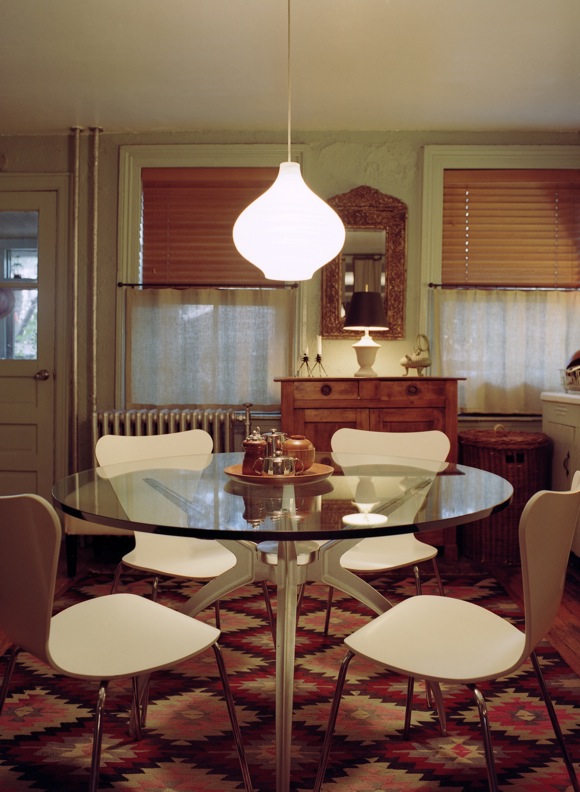
A FOND FAREWELL to Brownstoner readers from Cara Greenberg, whose final installment of The Insider this is. Stay tuned for an announcement of continuing coverage of interior design and renovation in the greatest borough of them all.
ROBERT FARRELL is an interior designer with eclectic style, at ease in high-end showrooms yet not above rescuing a deserving chair from the street. With interests ranging from antiquity to modern art, he lives stylishly on the ground floor of an 1863 row house, unfazed by the fact that the apartment measures just 600 square feet. “Small spaces make you think about how and what you need to live,” he says. “They’re an opportunity to edit down and live only with the things you really want.”
His key decision upon moving into the place in the mid-1990s: what color to paint the walls. “The reason I’m here is for the garden,” says Farrell, whose floor-through is attached to an impressively landscaped backyard, featured recently in The Outsider. He chose a pale gray-green celadon (Benjamin Moore #465) for the main walls “as a way of connecting inside and outside,” he says. “It goes with everything.” To further brighten the space and “capture a feeling of being in the woods, with filtered, dappled light,” Farrell incorporated natural woods and used accents of yellow, red, white, and chrome in his decor.
Since the apartment is essentially two rooms, each serves many purposes. At the front of the building is a living room that quadruples as a bedroom, guest room, and library; there’s a dining room at the rear with a galley kitchen along one wall and a home office tucked into a corner. The space is divided by a pair of original parallel walls a few feet apart, which Farrell has dressed with floor-to-ceiling linen curtains “to make the interior softer and create a sense of depth from front to back.”
Read on and see more after the jump.
Photos: Brian Riley
Above: Farrell’s dining area displays his trademark balance between antique and modern. A contemporary Spanish table with a cast aluminum base sits on a contemporary kilim. White 1950s ant chairs and a mid-20th century light fixture brighten an old wood pantry cabinet from France, a carved antique mirror, and wood Venetian blinds. “You can’t do contemporary on the left and antiquity on the right,” says Farrell. “It all has to be considered simultaneously.”
The furniture arrangement in the main living space is basically linear, for clarity and organization. Two long walls are filled floor-to-ceiling with utilitarian metal bookcases for Farrell’s extensive collection of art books. The pull-out sofa is from Carlisle; the standing Triennale lamp is a Milanese design from the 1960s; Farrell had the coffee table custom-made at Morgik Metal in Manhattan.
Over the bed at the front of the apartment, framed art is evidence of Farrell’s wide-ranging interests. There are Op art silkscreen prints by Peter Gee in chrome frames as well as etchings of ancient Roman buildings in gilded ones. The red glass pieces are vintage Holmgaard.
Farrell painted an inexpensive wood wardrobe from Mexico the same celadon green as the walls, with brown trim, to serve as a hiding place for his TV and extra storage. He bought a pair of carved Honduran chairs with leather seats from a man on the street.
A small chest from an unpainted-furniture store (which Farrell painted red and yellow), a pair of antique Windsor chairs painted black, and a sunburst mirror hanging on the bookcase are examples of visual layering, he says, “to make a small space feel larger, richer, and deeper.”
Farrell uses the space between an arched doorway in the dining room and an old-style wall with a glass transom and sidelights for clothing storage. He removed a pair of French doors that took up too much space, replacing them with a double set of drapes — linen and sheers — that can be pulled closed for privacy when needed.
There’s a windowless entry hall under the stoop, which Farrell painted red to counteract its inherent dreariness, adding a cabinet he designed and had made at an unpainted-furniture store. It’s painted the same Sienna yellow as the frame of the red chest in the living room and the kitchen backsplash.
The red cushion on a patio sofa in Farrell’s garden, a continuation of the strong red accents inside, is another example of how he carefully he limits his palette. It’s part of what he calls “being clear about your overall intention.” Otherwise, he says, “You’re going to have a flea market situation, with stuff all over the place.”
Missed any previous installments of The Insider? Not to worry. Click here for the entire archive to date.

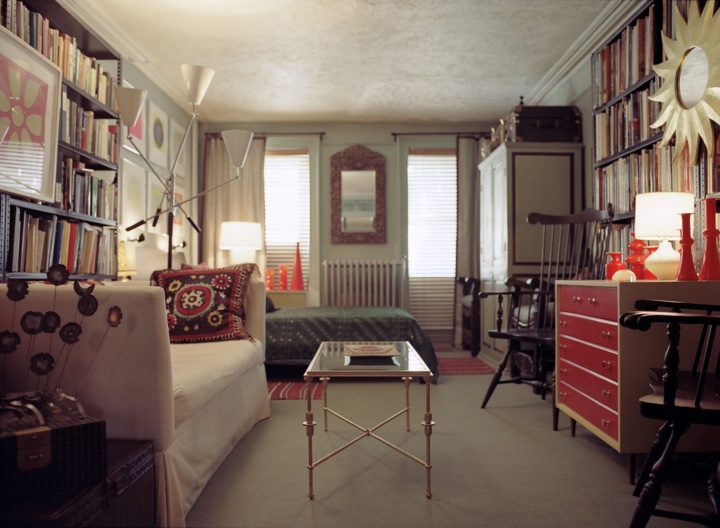
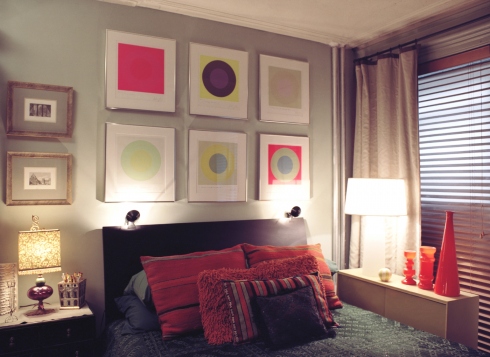
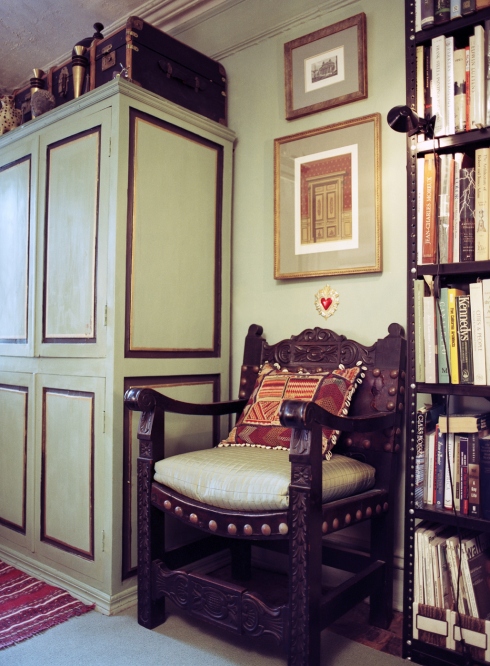
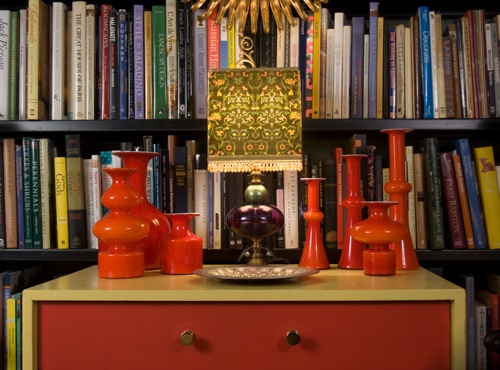
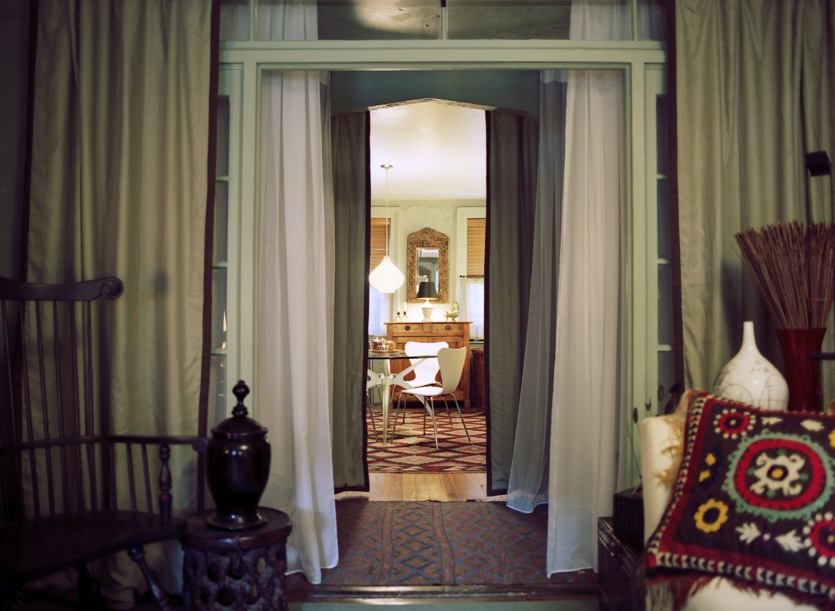

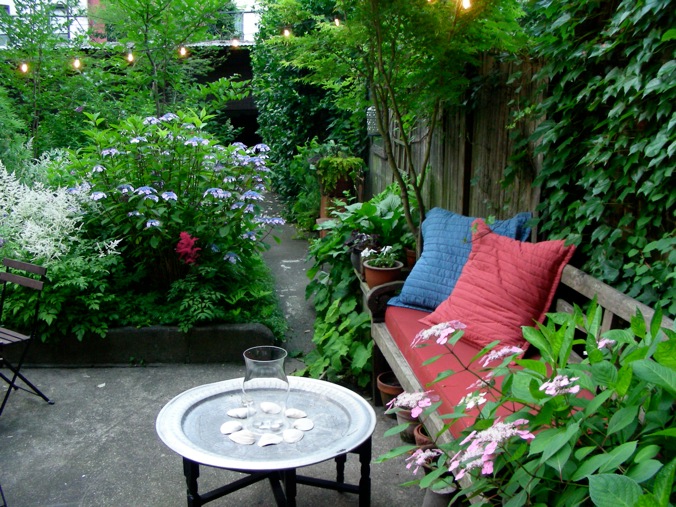




Your column was the reason I read the Brownstoner! Will be following your blog from now on. Their loss is my gain. Ciao Cara!
Your column was the reason I read the Brownstoner! Will be following your blog from now on. Their loss is my gain. Ciao Cara!